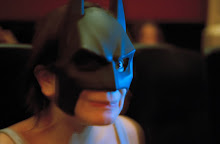 Death Note is a manga series written by Tsugumi Ohba and illustrated by Takeshi Obata. The story follows Light Yagami, a high school student who despises much of what he sees in the world around him. The power to create a crime free utopia is given to him through the Death Note, a powerful notebook dropped by a shinigami (Japanese death god) that allows the owner to kill whoever he can see. When Light decides to kill off all the world's criminals, will anyone be able to stop him? Should anyone stop him? This complex story of morals is equally matched by intricate and clever illustration.
Death Note is a manga series written by Tsugumi Ohba and illustrated by Takeshi Obata. The story follows Light Yagami, a high school student who despises much of what he sees in the world around him. The power to create a crime free utopia is given to him through the Death Note, a powerful notebook dropped by a shinigami (Japanese death god) that allows the owner to kill whoever he can see. When Light decides to kill off all the world's criminals, will anyone be able to stop him? Should anyone stop him? This complex story of morals is equally matched by intricate and clever illustration.The first thing that attracted me to manga was the artwork. I was drawn to the big-eyed characters and fantasy creatures set against realistic backgrounds. The ways in which Japanese illustrators are able to use black and white (and gradients) to express so much really impressed me. I am an especially big fan of Takeshi Obata's work (including Hikaru no Go). Ryuk actually gave me nightmares!! As did many of Light's expressions of rage...
When I first started reading manga, the original publishers would flip the artwork so English readers could still read from right to left and front to back. This would often leave the original concepts for the artwork hard to understand. Luckily, with the huge surge of interest in manga, publishers do as much as they can to have the English versions resemble the original Japanese manga. I found this really well done in Death Note.
Controversy has undoubtedly followed Death Note, though it has not stopped its popularity. Both an anime series and live action film have been created and met with much success. A trailer for the live action film can be found, here. And if you are an anime fan, episodes of the popular TV show can be found, here.
Another tidbit I found interesting was that Tsugumi Ohba remains a mystery to the general public, much like the character L.
Rereading Death Note allowed me to see more clearly the differences and specialties of manga that Scott McCloud touches upon in his book.






